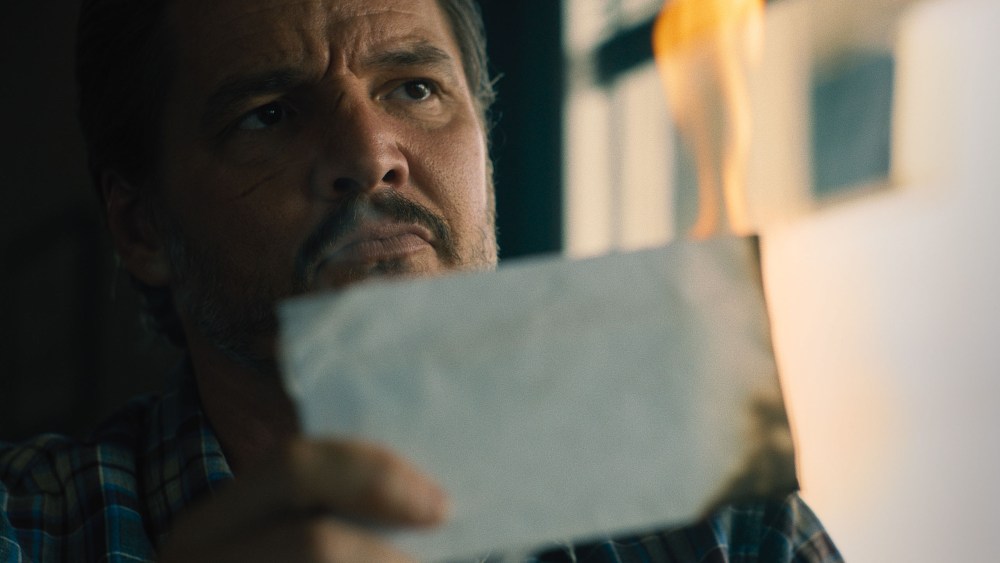Pedro Pascal and Jay Ellis Steal Oakland Homage
Taking a one-for-us victory lap after one-for-them studio smash “Captain Marvel,” indie duo Ryan Fleck and Anna Boden blow a big, self-indulgent kiss to the late-’80s East Bay with “Freaky Tales.” Berkeley-born Fleck was all of 10 years old in early 1987, when this nostalgia-fueled anthology film is set, which explains the wide-eyed way he romanticizes the defining subcultures of the time (with Boden presumably doing her best to broaden the film’s incredibly specific, “you had to be there“ appeal).
In four distinct but intertwining chapters — populated mostly with fresh faces, plus grizzled-but-gorgeous Pedro Pascal — “Freaky Tales” melds wildly different sectors of the city: There’s the rowdy-yet-respectful Gilman Street punk crowd; the revolutionary Oakland hip-hop scene (including Too $hort, whose raunchy rap anthem gives the film its name); the Warriors’ historic victory over the Lakers, in which local basketball legend Eric “Sleepy” Jones scored a record-setting 29 points in the last quarter; and a disturbing spike in Neo-Nazi-linked hate crimes, which strangely serves to tie everything else together.
As if those disparate realms weren’t enough of a grab-bag, the co-directors also pack in scores of vintage film, fashion and music references — the most conspicuous being the “Repo Man”-like “cosmic green shit” seen glowing throughout. That phosphorescent energy represents whatever special mojo Fleck and Boden associate with Oakland at the time. The filmmakers played a similar game in “Captain Marvel,” piling on the wink-wink tributes to mid-’90s pop culture in that case. (Remember all the retro needle drops? And the Blockbuster Video store scene?)
Here, they turn back the clock another decade, paying geek-out homage to all that was edgy and cool about Oakland circa 1987. It’s hard to say who Fleck and Boden imagine as the target audience for “Freaky Tales,” beyond the obvious hometown crowd. With its killer soundtrack and deep-cut allusions, their script lays claim to everyone from Bruce Lee to Tom Hanks (who hawked hot dogs at Oakland Coliseum), while celebrating the impact local musicians had on the zeitgeist.
The first chapter focuses on the local punk scene, which begat bands like Operation Ivy and Green Day. Beneath their tough exterior, East Bay punks were far more tolerant than their earlier New York and London counterparts. “No Racism. No Sexism. No Homophobia. No Drugs. No Alcohol. No Violence,” reads a sign inside Gilman, a club brutally raided by a gang of skinheads. The next time the Neo-Nazis roll up, the punks are ready, unleashing a street fight baldly inspired by Walter Hill’s “The Warriors.”
Embellished with slo-mo and sprays of blood, the well-choreographed fight scene is satisfying to watch, but violates a tenet of East Bay culture: namely, that words are the best weapons. Fleck and Boden put that philosophy in action with the next chapter, wherein Too $hort (Symba) challenges female duo Danger Zone (played by Dominique Thorne and Normani, in her acting debut) to an epic rap battle.
Each of the stories wraps abruptly, flashing back to a strange campaign for something called the Psyotics spiritual learning center — practically the only continuity to be found as the bizarrely structured film switches up aspect ratios and visual styles with each segment. A NorCal “Short Cuts” this is not, as the filmmakers take their cues not from Altman, but a wide array of cult directors, none more than Quentin Tarantino (who wouldn’t appear for another five years).
“Freaky Tales” takes nearly 40 minutes to find its footing, but once it does kick in, there’s roughly an hour of grindhouse glory ahead (assuming streaming audiences make it that far). Stick around and you’ll get a totally unexpected cameo from a good-sport A-lister with Bay Area roots (seen behind the counter of an old-school video store), plus a corker of a finale featuring rising star Jay Ellis in what amounts to a “Kill Bill”-style, alternate-universe reimagining of Sleepy Jones’ big night — one in which the hoop star takes on a bigoted cop (Ben Mendelsohn) far dirtier than Clint Eastwood’s Harry Callahan.
Even before Sleepy Jones can wreak his spectacular revenge, the movie starts to pick up with Pascal’s appearance in the third chapter. He plays Clint, a bone-crunching debt collector who’s resolved to go clean. Leaving his pregnant girlfriend (Natalia Dominguez) in the car, Clint breaks some fingers for the last time, not realizing fate is about to catch up with him. Unlike the punk and hip-hop segments that preceded it, Pascal’s plot feels substantial enough that it could have supported an entire feature. Strange then that his story ends so abruptly after he’s hauled into police headquarters — unless you count his less active role in the final chapter.
From the feel of it, Fleck and Boden approached “Freaky Tales” as if it could be their “Pulp Fiction.” After all, Tarantino’s movie similarly jumped around in time to focus on characters who factor as background figures in one another’s stories. Both films operate as dizzying pop-culture pastiche, and while it’s fun to see the co-directors cut loose, “Freaky Tales” gives audiences less reason to care about its ensemble. Tarantino has an instinct for tension — as well as twisted comedy — that’s all but absent here. Assuming that “Freaky Tales” was Fleck’s baby, maybe Boden will be the one to dictate what their next project will be. Between “Half Nelson” and this doing-the-most piledriver of a movie, they would do well to dial it back to human-level stories.

